UPCYCLING IN NEPAL
UPCYCLING IN NEPAL
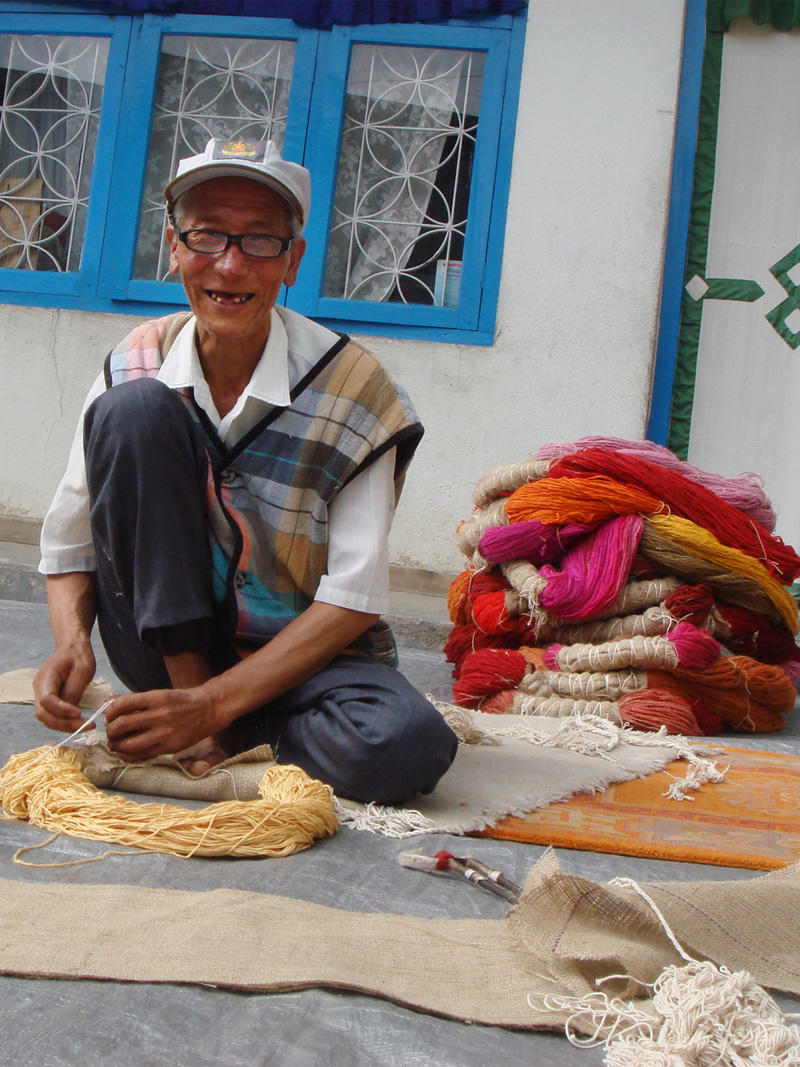
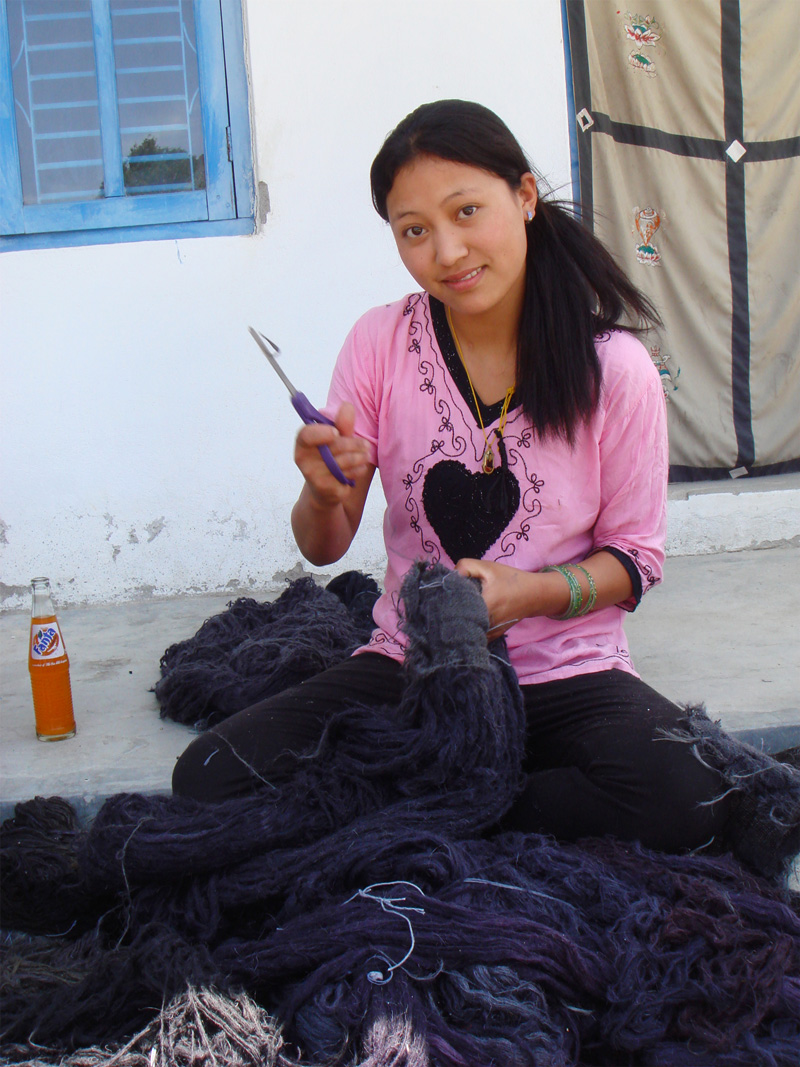
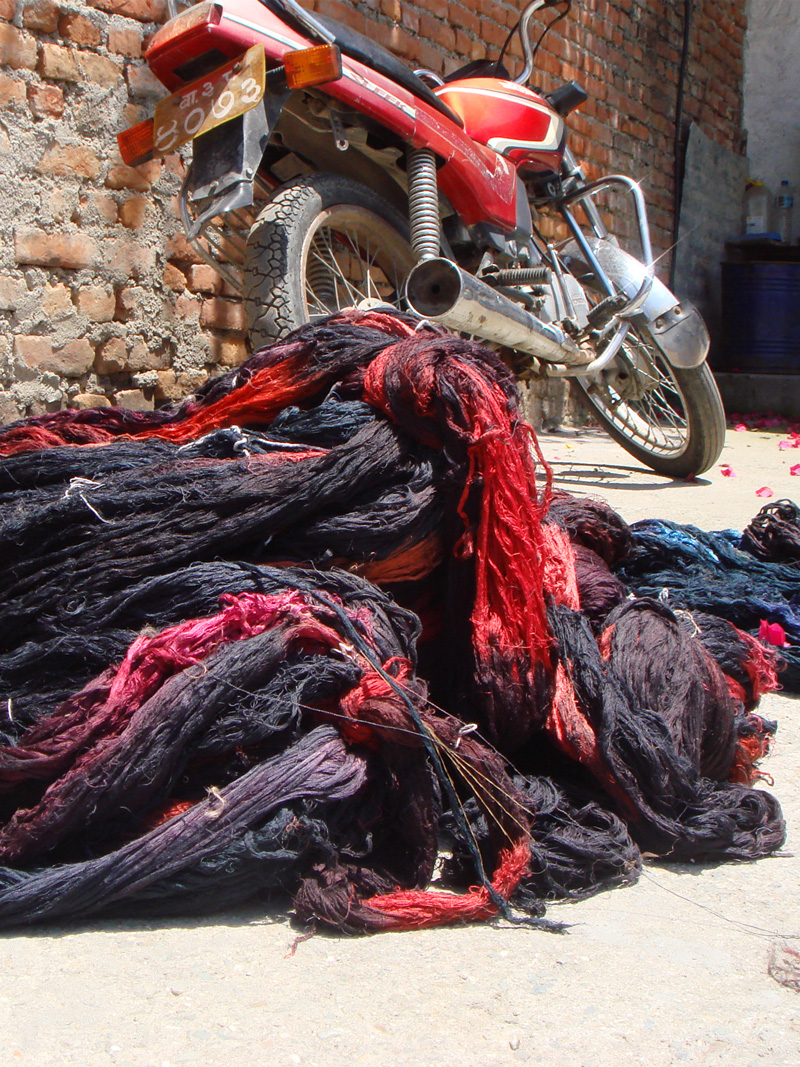
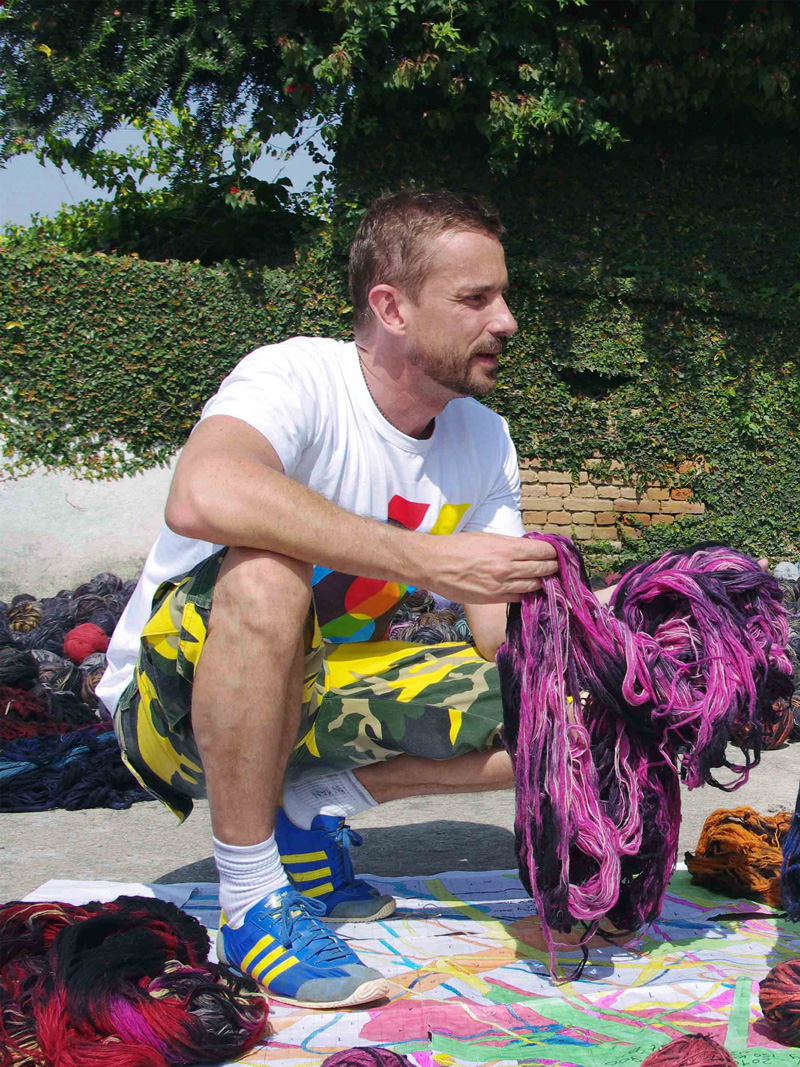

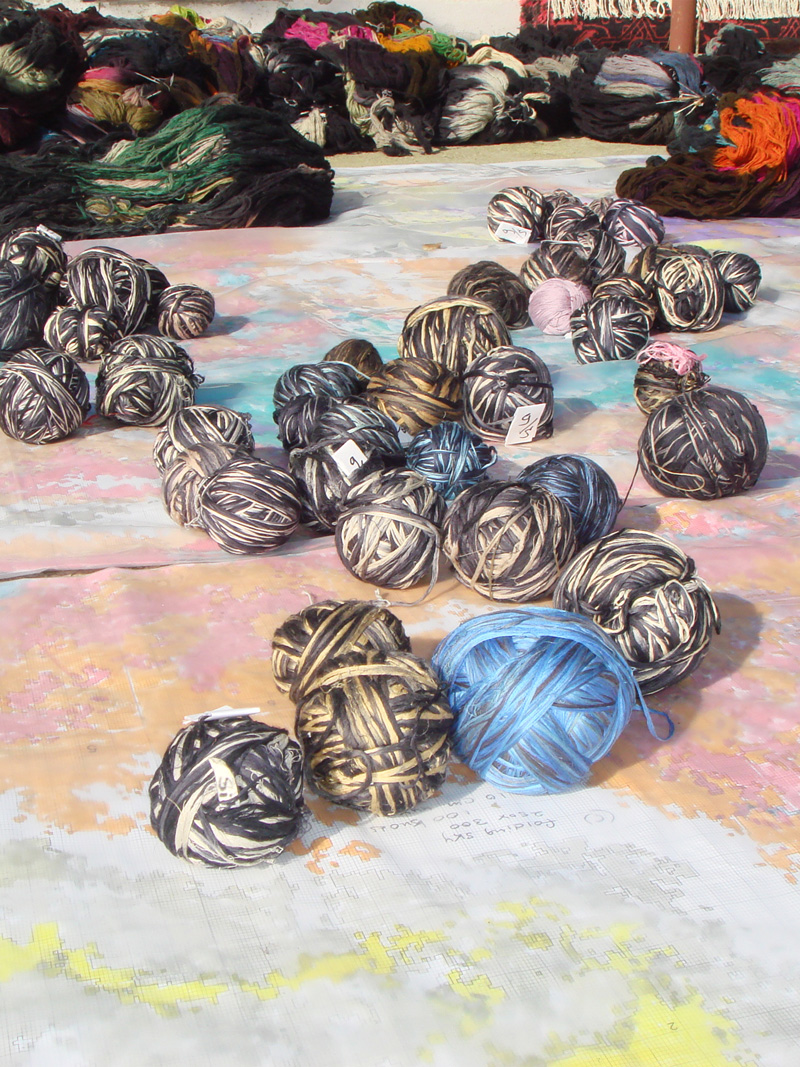


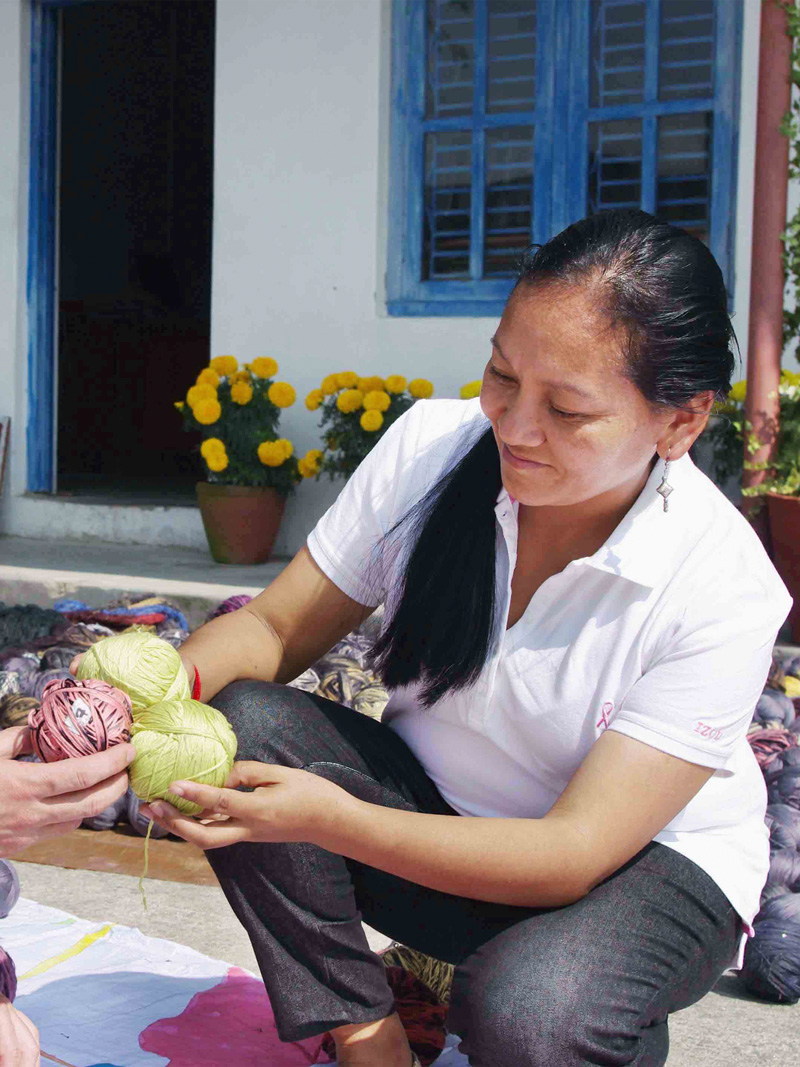
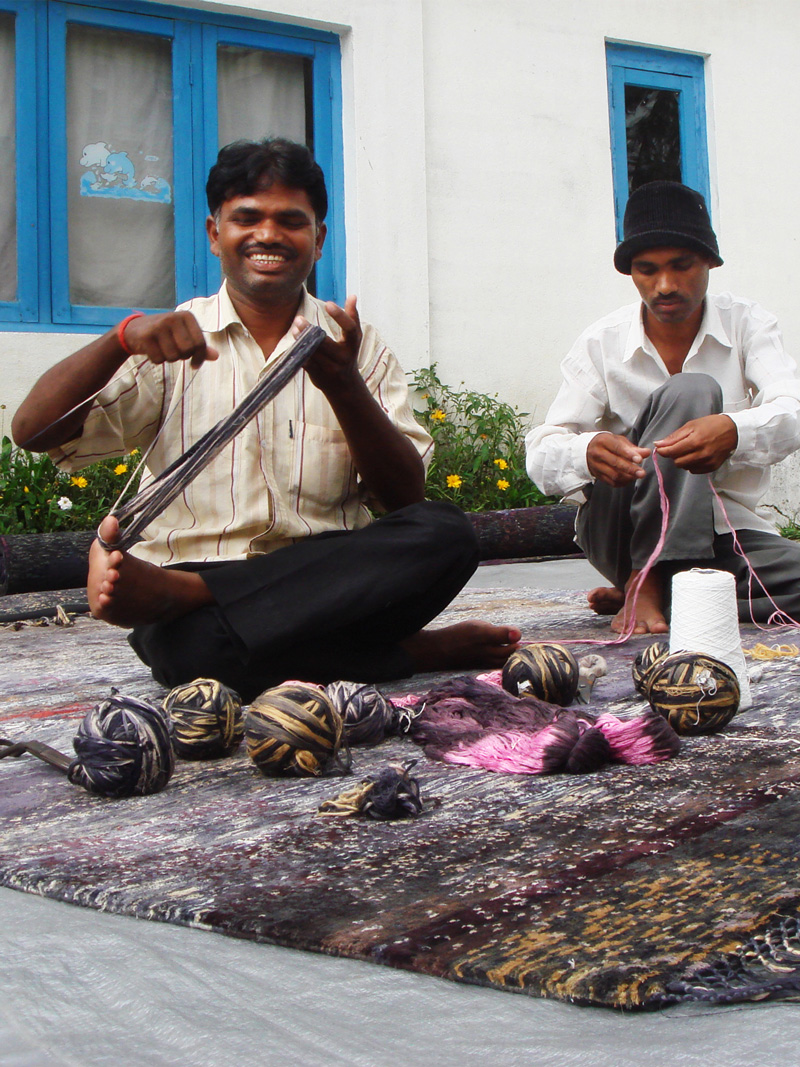
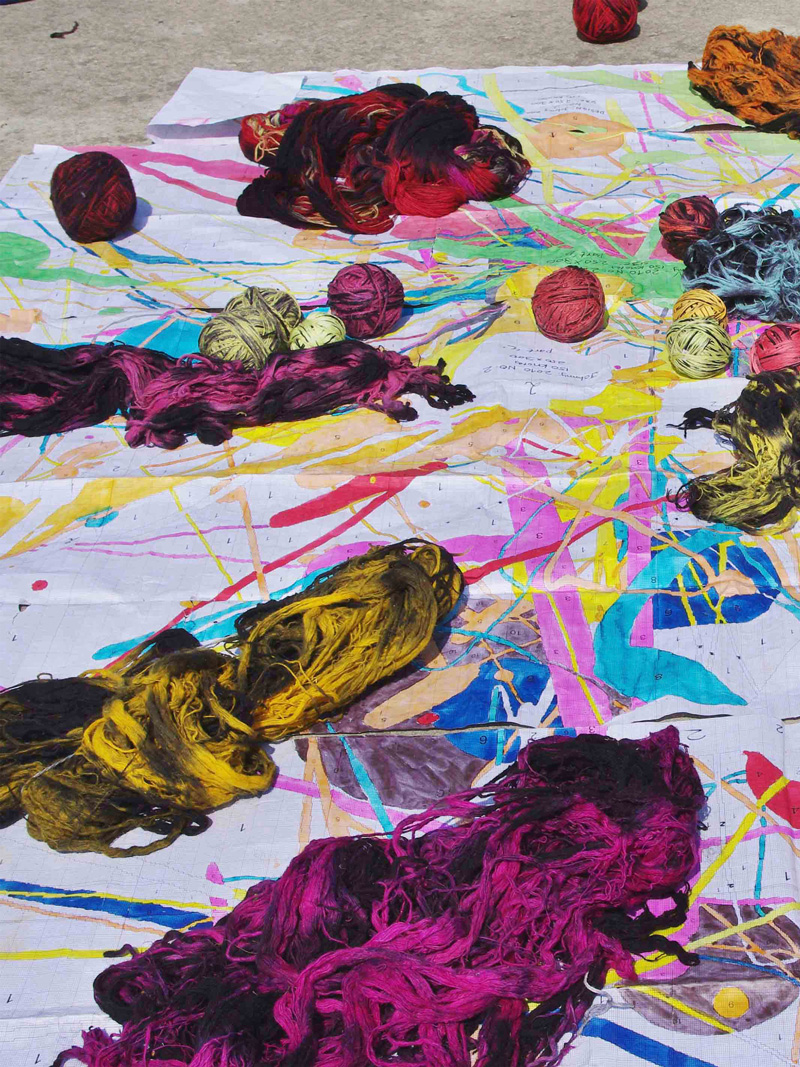

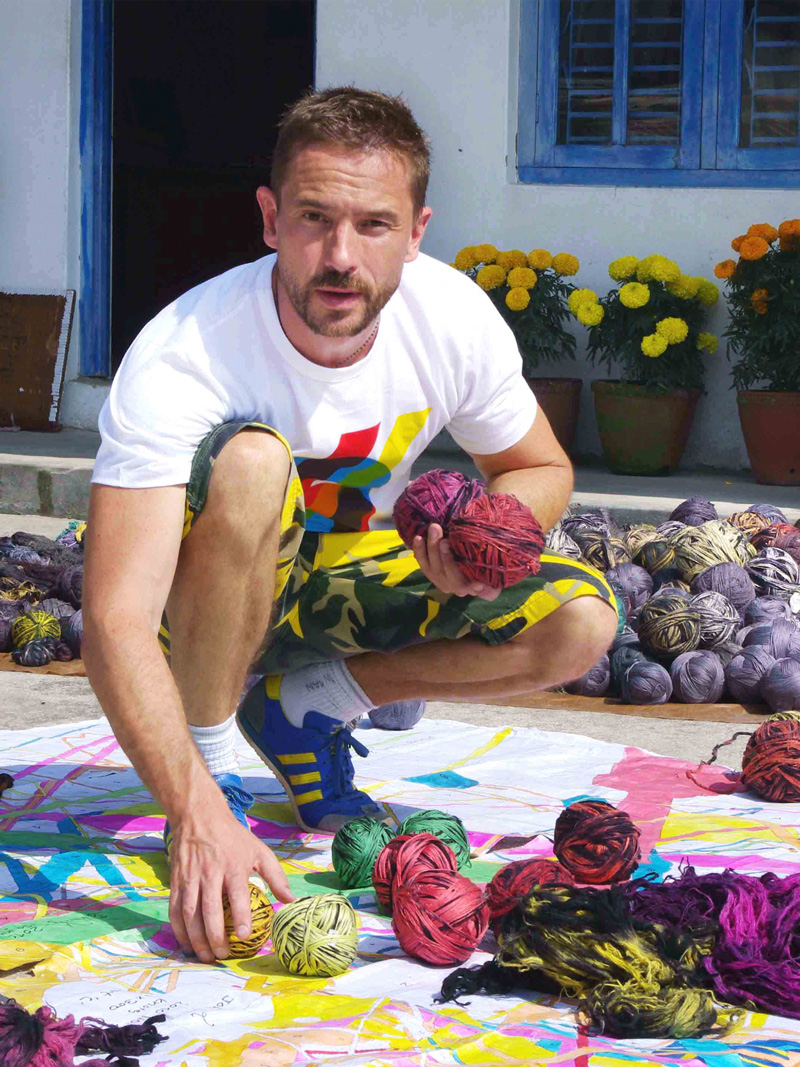

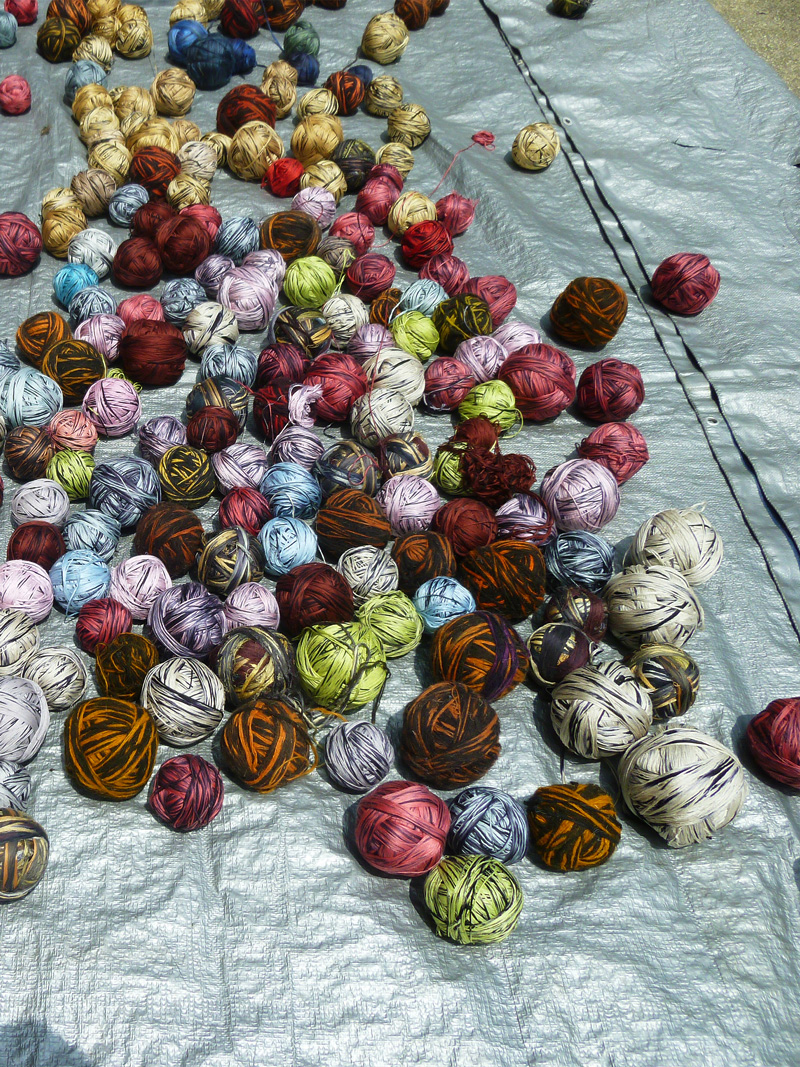
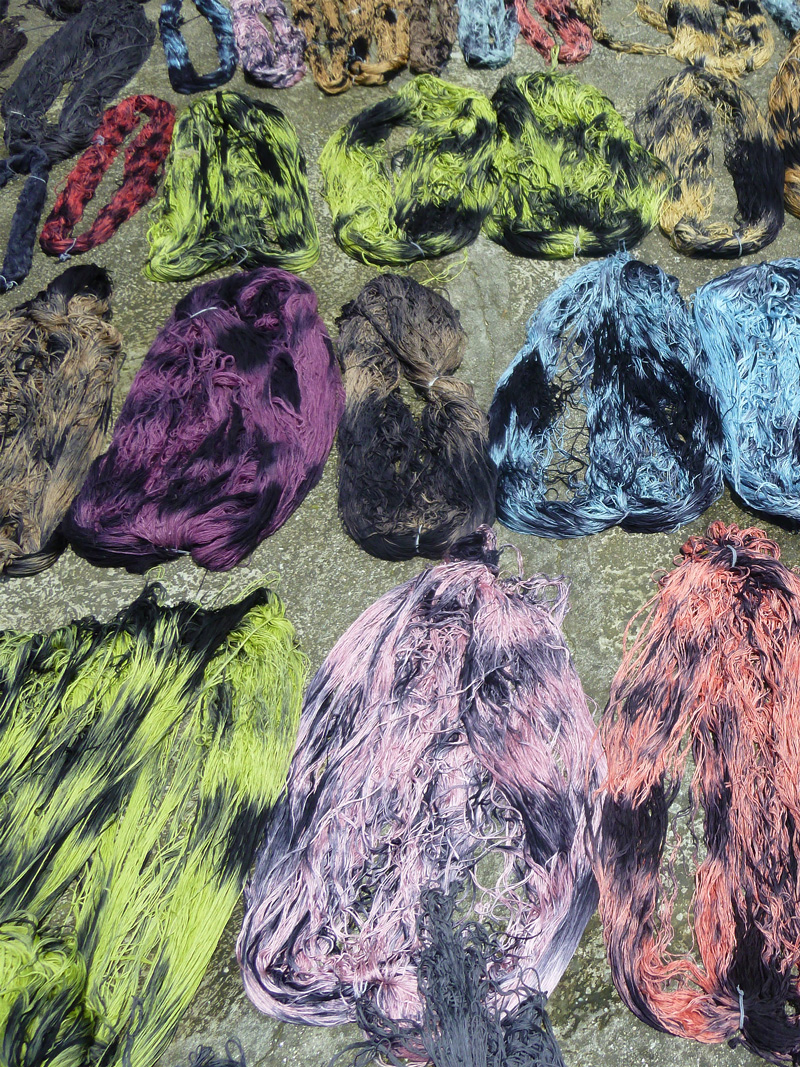

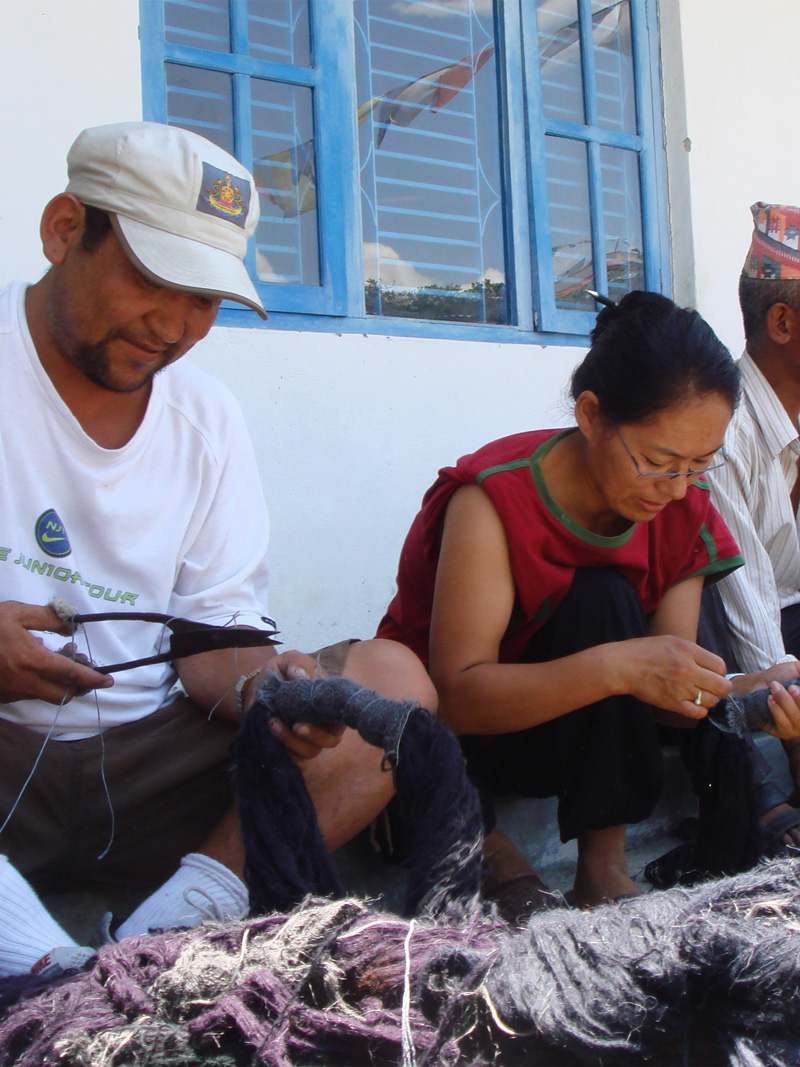
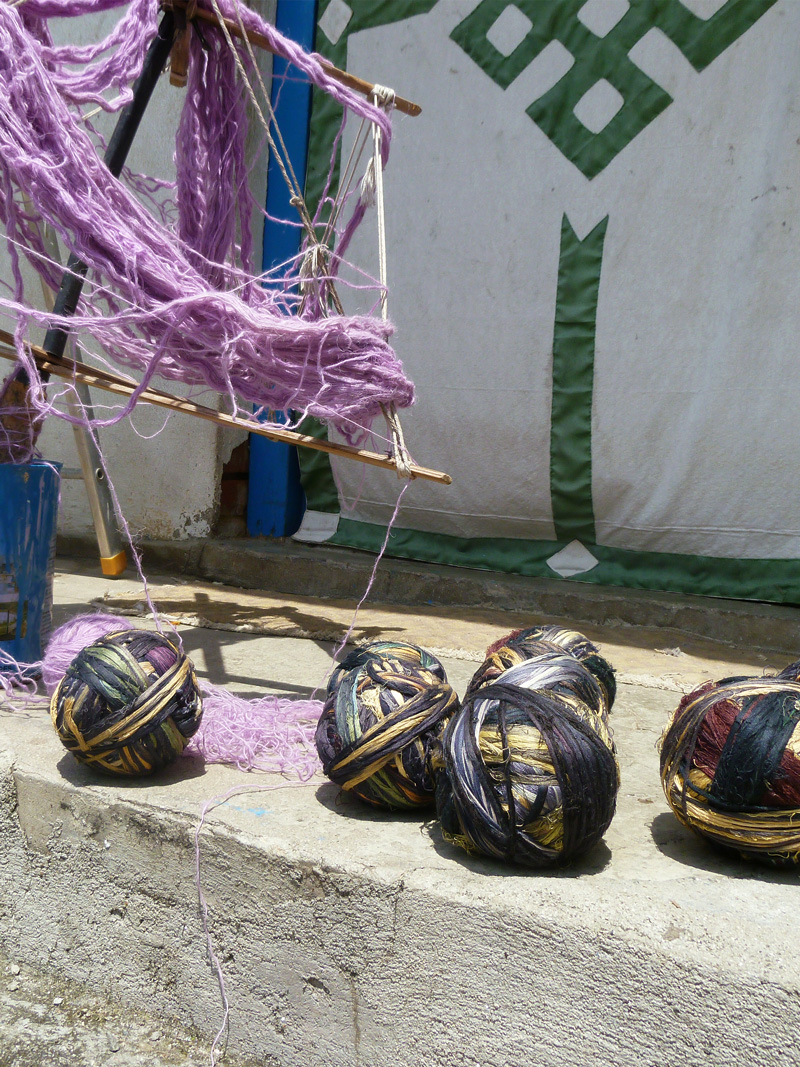
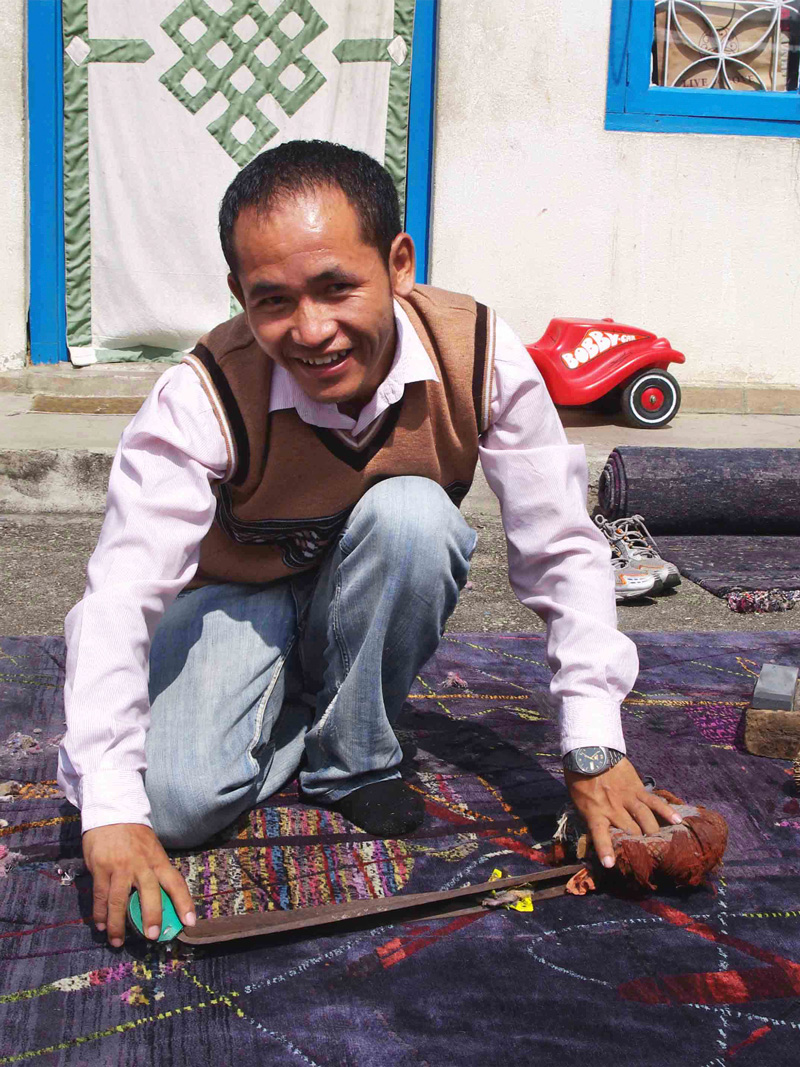
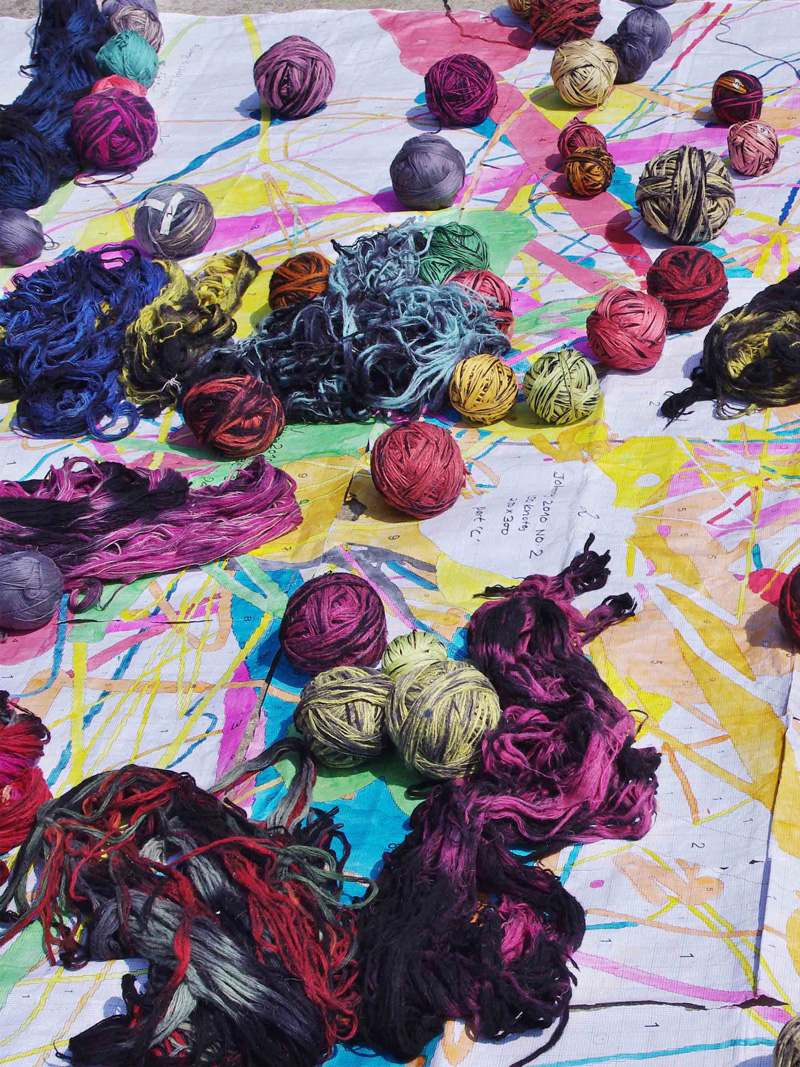

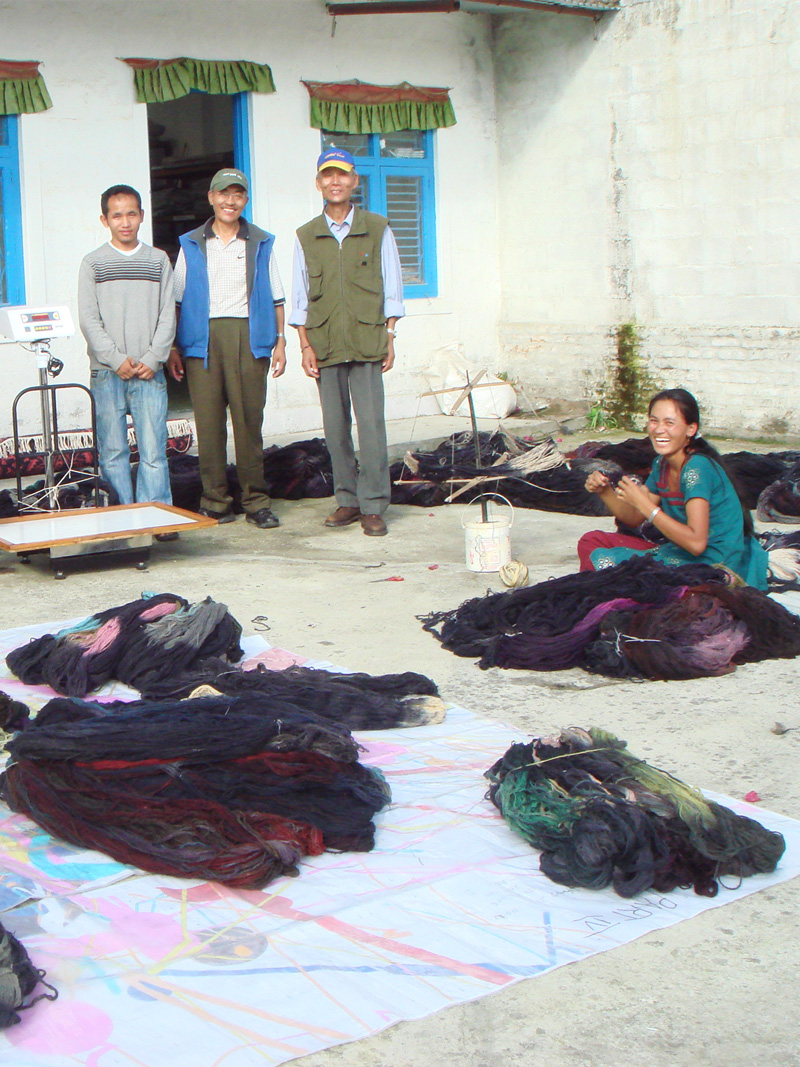
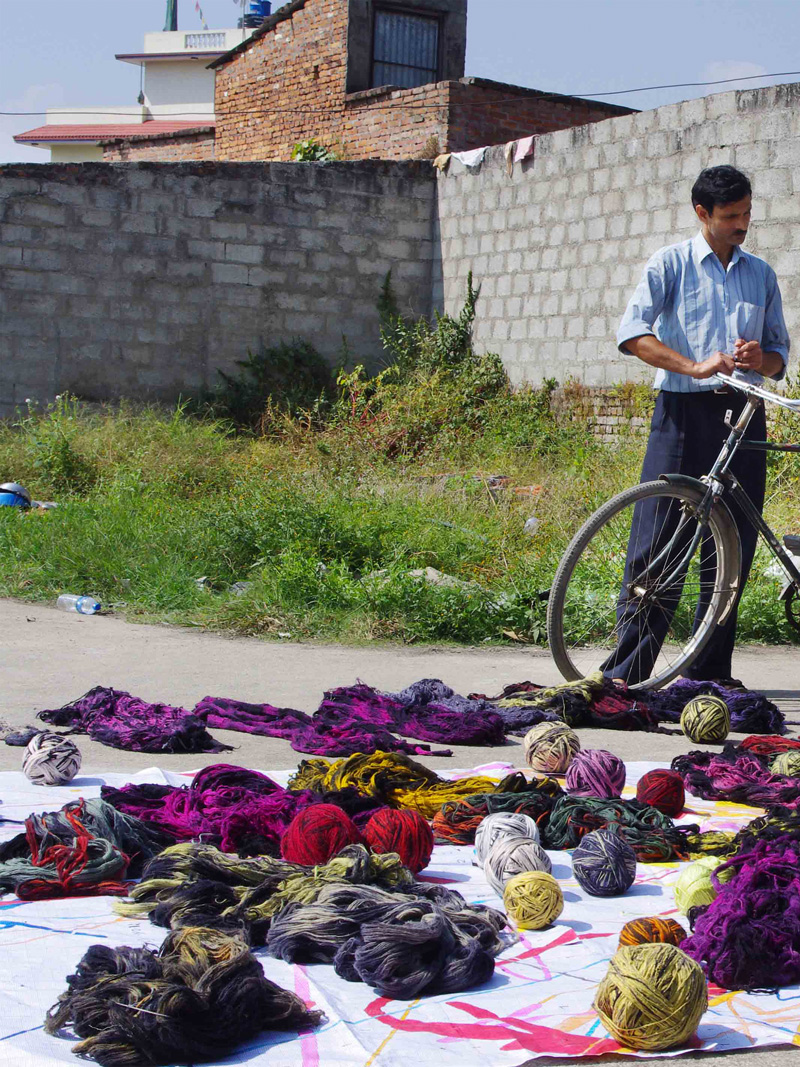

Now in Nepal, a workforce of around 800 highly skilled individuals dedicates their expertise to producing the finest Tibetan carpets for RUG STAR. They employ centuries-old techniques in hand-knotting these textile marvels, upholding a tradition that has been passed down through generations. One distinguishing feature of the Tibetan weave is the method of threading three warps through the weft simultaneously. This unique knotting technique allows for the blending of fabrics and colors directly on the loom. It is a technical detail that perfectly aligns with my preference for working with gradients in our RUG STAR designs, emphasizing the movement and depth on the surface of our hand-knotted rugs.
However, the journey to establish RUG STAR and create these exceptional carpets began with a serendipitous encounter during my trekking adventures in Nepal as a young architecture student. It was in the shadow of the majestic Annapurna, an 8,500-meter-high mountain in the Himalayas, that I stumbled upon an old Tibetan rug measuring 90 cm x 150 cm. To my surprise, this seemingly ordinary checkerboard-patterned rug held immense value, both in its cultural significance and its market worth. Intrigued, I delved deeper into the world of rugs, making return visits to Nepal and forging connections with Tibetan families and communities in exile.
Over the course of a decade, rugs became more than a mere fascination. They became my passion and love. As I transitioned from student to architect, the desire to transform my passion into a profession grew stronger. In 2002, I took the leap and founded RUG STAR in Berlin, Germany, embarking on a journey that has enriched my life in immeasurable ways.
During the initial seven years of RUG STAR, I focused solely on the Tibetan weave and established partnerships with three workshops in Kathmandu, Nepal, where the craftsmanship of these rugs thrives. However, it wasn’t without its challenges. Convincing the artisans to break away from the homogeneity that had been ingrained in their practices and rediscovering the spontaneity and identity of their craft was a task in itself. I encouraged them to infuse the material workmanship and dyeing techniques with a sense of impulse and individuality. Just as a good tomato salad depends on the quality and flavor of the tomatoes, the essence of a remarkable rug lies in the quality of its raw materials. Starting from the source, each step in the production process contributes to enhancing the life and soul of the material, resulting in a finished product that exudes a distinct character.
One of our major strengths in Tibetan production lies in our ability to create movement on the surface of a hand-knotted rug. With the use of three threads in every single knot, we have the flexibility to mix colors and materials, allowing for intricate designs and a vibrant interplay of shades. To master this flow, we combine various techniques throughout the production process. It begins with the careful selection of rich wool that possesses subtle variations in color and texture. This concept extends to the dying process, where traditional pot dying techniques are employed, resulting in a color palette with beautiful gradients, known as abrash. The knotting process itself becomes a canvas for mixing colors and materials, creating a captivating pixelated effect. And finally, it is during the washing process that the true magic unfolds, as we blend techniques to achieve a sense of randomness and individuality. The result is a rug that embodies a unique personality and adds an unmistakable touch of distinction to any interior space.
At RUG STAR, we celebrate the fusion of tradition and innovation, the ancient artistry of rug-making infused with contemporary design. Our carpets are more than mere floor coverings; they are expressions of identity, stories woven into each thread, and transformative pieces of art that breathe life and soul into any space they inhabit. Our vision at RUG STAR is simple yet profound – we want our hand-knotted rugs to be alive and sexy, to be seen and experienced in all their magnificent abilities. To achieve this, we continuously push the boundaries of creativity and craftsmanship, never compromising on the quality of materials or the integrity of the production process.
In Nepal, where RUG STAR’s roots are deeply intertwined, we have built a strong relationship with the local communities and artisans. It is a partnership that goes beyond business; it is a collaboration built on trust, respect and a shared love for the art of rug-making. Working closely with the artisans, we have come to appreciate the intricate knowledge and skill they possess, passed down through generations. It is their dedication and expertise that enable us to create rugs that are not just beautiful, but also tell a story and evoke emotions.
But our journey did not stop in Nepal. In 2009, driven by a desire to expand our horizons and explore new possibilities, we ventured across the border to India in search of the perfect location to produce another passion of mine – the Persian weave. After mastering the Tibetan weave, I was eager to extend my skills and delve into the world of hand-knotted Persian rugs. In the vibrant region of Rajasthan, particularly in the city of Jaipur, we found everything we dreamt of. Here, the Persian weave has been an integral part of the rich heritage for over 500 years, rooted in centuries-old traditions and craftsmanship. This historical connection to the art form was crucial, as it allowed us to produce rugs that carry a soul, a depth that can only come from a deep-rooted heritage.
The Persian weave presents its own set of challenges and opportunities. Unlike the Tibetan weave, which employs a single thread in each knot, the Persian weave utilizes a single thread to make a knot, resulting in a pixelated effect that can be harnessed as part of the design language. It is in the washing process that we discovered the magic ingredient for the Persian weave. Through techniques like “oxidization” and “sandblast,” we have developed innovative methods to create new kinds of flow and patina within the production process. These techniques bring out subtle variations in color and texture, reflecting light on the surface of each rug and adding a soft, tender touch to the overall design.
For me, the production of hand-knotted rugs is a labor of love. It is a process that demands the attention, curiosity, and dedication of every single member involved. From the selection of the finest wool to the dying process, from setting up the loom to the meticulous knotting, and finally to the washing and finishing touches, each step requires meticulous care and craftsmanship. Witnessing the harmony and synergy that emerges as thousands of working hours merge into one final product is nothing short of a blessing. It is the culmination of the collective efforts and expertise of the entire team, each contributing their unique skills to create a rug that is a true work of art.
At RUG STAR, we believe that diversity in design is essential. We celebrate the rich tapestry of cultures, influences, and inspirations that shape our world. Our commitment to diversity is reflected in our extensive range of 1,400 designs, each carefully crafted to cater to a myriad of tastes and preferences. We strive to create rugs that transcend boundaries and bring people together, adding warmth, beauty, and a touch of individuality to any space.
In conclusion, my journey with RUG STAR began with a simple purchase of a Tibetan rug in the mountains of Nepal. It ignited a passion within me that has grown into a lifelong pursuit of excellence in rug design and craftsmanship.
From the mountains of Nepal to the heritage-rich lands of India, RUG STAR has become a beacon of creativity, innovation, and tradition in the world of hand-knotted rugs. With each rug we produce, we strive to breathe life, movement, and soul into spaces, creating a truly captivating and transformative experience for all who encounter our creations.
While abrash is a natural occurrence in hand-knotted rugs, at RUG STAR we also intentionally create abrash by purposefully introducing variations in dyeing or blending different shades of wool. It can add subtle shifts in color and create an interplay of light and shadow, giving the rug a dynamic and lively appearance.
Abrash refers to subtle variations in color that occur naturally within the rug, resulting from differences in the wool or the dyeing process. It manifests as slight shifts or variations in shade or tone, creating a nuanced and textured appearance. The occurrence of abrash in Tibetan rugs is a result of the use of hand-spun wool and the traditional dyeing techniques employed by skilled artisans. Unlike machine-made rugs, where colors are uniform and consistent, abrash in hand-knotted Tibetan rugs adds a unique charm and individuality to each piece.
The presence of abrash in Tibetan rugs can be seen as a testament to the authenticity and craftsmanship of the rug. It is a reminder of the human touch and the organic nature of the weaving process, where variations in the wool, the dye, or even the atmospheric conditions during dyeing can contribute to the development of abrash.
The dyeing process of raw materials in Nepal to produce hand-knotted Tibetan rugs is a meticulous and time-honored craft. It involves several stages to ensure vibrant and long-lasting colors that enhance the beauty of the final rug.
After the raw wool is carefully washed and cleaned to remove impurities, it undergoes another important step before dyeing: spinning. The clean wool fibers are hand-spun into yarn, which will later be used for the weaving process. Hand-spinning involves twisting the fibers together using a spinning wheel or spindle, resulting in strong and resilient yarn.
Once the yarn is ready, it is then soaked in large vats of water to prepare it for the dyeing process. Natural and synthetic dyes are carefully selected based on the desired colors and design of the Tibetan rug. Natural dyes, sourced from plants, minerals, or insects, provide a rich and earthy color palette that adds to the rug’s authenticity. On the other hand, synthetic dyes offer a wider range of vibrant and bold hues, allowing for more creative possibilities.
The dyeing process requires expertise and precision. The wool is immersed in the dye bath, and the artisans carefully monitor the temperature and duration of the dyeing to achieve the desired color intensity. They may adjust the dye concentration or immersion time to create different shades or achieve a gradient effect.
In the process of hand-knotted Tibetan rug production in Nepal, there is a crucial step called balling that takes place after the wool has been spun and dyed. This step involves combining three threads together into a ball, which is then used by the weaver on the loom to create the rug.
The balling process requires precision and care to ensure that the three threads are evenly distributed and properly aligned. Skilled artisans meticulously wrap the threads around each other, creating a compact and well-formed ball. This technique allows for efficient and consistent weaving on the loom, as the weaver can easily access and work with the threads.
The use of three threads in the balling process is a defining characteristic of hand-knotted Tibetan rugs. It adds strength and durability to the rug, as the three threads are tightly woven together to form a solid foundation. This construction technique contributes to the longevity of the rug, ensuring that it can withstand the test of time.
We love the exceptional softness, durability, and natural resilience of Tibetan wool. It is sourced from sheep native to the Tibetan plateau, which encompasses regions of Tibet, China, Nepal, and India. We highly value the wool for its quality and unique characteristics that perfectly complement the exceptional personality of our hand-knotted rugs at RUG STAR.
The sheep that produce Tibetan wool have adapted to the harsh climate and high altitudes of the Tibetan plateau, resulting in a dense, long, and strong fleece that provides excellent insulation and protection against extreme temperatures. This strength and resilience contribute to the longevity and durability of our rugs, ensuring they can be cherished as heirloom pieces for generations.
One distinctive quality of Tibetan wool is its high lanolin content, which gives it a softness and sheen. This lanolin-rich wool is prized for its natural luster, luxurious feel, and effective dye absorption, resulting in vibrant and long-lasting colors in our rugs.
Also called the Senneh knot or Tibetan loop knot, is tied around two adjacent warp threads using a metal stick like a comb or a Tibetan rug hook. The weaver forms a loop with the yarn, passes it behind the two warp threads, and pulls it back through the loop to secure it. This process, facilitated by the metal stick, creates a distinct looped structure visible on the rug’s surface. Unlike the Persian knot, the Tibetan knot remains uncut, resulting in an open pile or looped texture that adds a unique dimension to the rug.
Compared to the Persian knot, the Tibetan knot is larger and bulkier, contributing to the rug’s overall thickness and durability. The loops formed by the Tibetan knot offer additional cushioning and resilience, making it suitable for high-traffic areas or those requiring extra comfort underfoot.
In contrast, the Persian knot, also known as the asymmetrical or single knot, is tied around a single warp thread. The weaver wraps the yarn around one warp thread, passes it over and under another warp thread, and tightly pulls it to secure the knot. This creates a more symmetrical and tightly woven appearance on the rug’s surface.
The loom’s preparation starts by securely anchoring it, establishing a stable framework for weaving. Vertical warp threads form the loom’s foundation, extending from top to bottom, where the knots will be tied.
Subsequently, the warp threads are evenly and tightly stretched across the loom, requiring precision to ensure alignment and proper tension. Maintaining consistent tension is crucial for an even weave and to prevent distortions or inconsistencies in the rug.
After threading the warp through heddles and the reed, the weaver carefully adjusts the tension to achieve the desired density and tightness. This step significantly influences the rug’s structure, drape, and durability.
With the loom fully prepared and the warp threads appropriately tensioned, the weaver commences the intricate process of hand-knotting the rug. Each knot is meticulously tied by hand, as the weaver interlaces the weft threads through the warp threads, bringing the intricate patterns and designs to life.
Historically, Tibetan rugs have a rich and storied past. The art of rug weaving has been an integral part of Tibetan culture for centuries, with weaving techniques and designs passed down through generations. Tibetan rugs were initially created for practical purposes, serving as warm and durable floor coverings in the harsh Himalayan climate.
At RUG STAR, we take great pride in our Tibetan hand-knotted rugs. They are not just floor coverings; they are works of art that embody movement, tell stories, and inspire emotions. Through our commitment to innovation and pushing the boundaries of rug design, we aim to create rugs that not only enhance spaces but also captivate and ignite the imagination. The technique we have homed in Tibetan rug production has influenced our approach to Persian rug production as well, allowing us to infuse a sense of flow and modernity into our designs.
Tibetan rug production: In the production of a hand-knotted Tibetan rug, the process begins with the preparation of the loom. Our skilled artisans carefully set up the loom, creating the foundation upon which the rug will be woven. The vertical threads, known as the warp, are stretched tightly across the loom, while the horizontal threads, called the weft, are woven through the warp to form the base structure of the rug.
Once the loom is prepared, the intricate knotting process begins. Our artisans work diligently, knotting three threads simultaneously using the metal stick as a guide. This technique requires precision and expertise, as each knot must be tightly secured to ensure the rug’s durability and longevity. The knotting process is a labor-intensive task that requires patience and attention to detail.
The time it takes to complete a hand-knotted Tibetan rug varies depending on its size, complexity, and design. Larger rugs with intricate patterns can take several months to complete, while smaller rugs may require a few weeks. Our artisans invest their time and skill into every rug, ensuring that each piece meets our high standards of quality and craftsmanship.
Throughout the production process, our artisans pay meticulous attention to color blending and pattern alignment, ensuring that the design comes to life with precision and artistry. Once the knotting is complete, the rug undergoes a meticulous finishing process, which includes trimming the pile to achieve a uniform height, washing, and drying to enhance the rug’s softness and luster, and final inspections to ensure the rug meets our exacting standards.
The production of a hand-knotted Tibetan rug is a labor of love, requiring the expertise of skilled artisans and the dedication to preserving this time-honored tradition. Each rug is a masterpiece, meticulously crafted with passion and care. It is a testament to the rich heritage of rug weaving and the artistry that goes into creating these exceptional pieces.
Tibetan patterns in rug weaving are deeply rooted in the cultural and religious heritage of the Tibetan people. These patterns often incorporate symbolic motifs and designs that hold spiritual significance and reflect the natural world. One of the most common motifs found in Tibetan rugs is the lotus flower. The lotus holds great significance in Tibetan Buddhism and symbolizes purity, enlightenment, and spiritual growth. The intricate petals of the lotus are often depicted in vibrant colors, creating a visually striking focal point in the rug.
Another frequently used motif is the dragon. In Tibetan culture, the dragon represents power, wisdom, and protection. Dragons in Tibetan rugs are depicted in various forms, from fierce and majestic dragons with multiple heads to more stylized and flowing dragon patterns. These intricate dragon designs add a sense of dynamism and energy to the rug.
Other motifs found in Tibetan rugs include auspicious symbols such as endless knots, conch shells, double dorjes (a symbol of enlightenment), and the Wheel of Life. These symbols carry deep spiritual meanings and are believed to bring blessings and positive energy to the space.
Before spinning, the wool undergoes a carding process. Carding involves combing or brushing the wool fibers to align them in the same direction and remove any tangles or impurities. This step is crucial in preparing the wool for spinning by creating a smooth and even yarn. Carding helps ensure a more uniform texture in the finished rug.
After the raw wool is washed and cleaned, it is ready for spinning. Hand-spinning is the process of twisting the wool fibers together to form yarn. Artisans use spinning wheels or spindles to create strong and resilient yarn. This spinning process is essential for preparing the wool for weaving and ensuring the quality and consistency of the yarn.
Both carding and spinning require skill and precision. The artisans carefully handle the wool fibers, paying attention to the thickness and tension of the yarn. These processes contribute to the overall quality, strength, and integrity of hand-knotted Tibetan rugs, ensuring their durability and ability to withstand the test of time and daily use.
In addition to Tibetan wool, natural fibers such as hemp, nettle, and linen are also used in the production of Tibetan rugs. The combination of Tibetan wool with hemp, nettle, or linen creates rugs with varied textures, enhanced durability, and a distinct visual appeal.
We carefully select and blend different fibers to create rugs that not only embody the traditions of Tibetan rug weaving but also embrace the beauty and versatility of natural materials.
Hemp, a versatile and sustainable fiber, has been used in textile production for centuries. It is known for its strength and durability, making it an excellent choice for rug weaving. Hemp fibers are typically coarse and have a slightly rough texture, which adds a distinctive element to the rug’s surface. Additionally, hemp fibers have natural antimicrobial properties, making them resistant to mold and mildew.
Nettle fiber, derived from the stalks of the nettle plant, is another natural fiber commonly used in Tibetan rug production. Nettle fibers are strong, lightweight, and have a smooth texture. They can be blended with other fibers to enhance their strength and add a softness to the rug. Nettle fibers are also known for their breathability and moisture-wicking properties, making rugs made from this fiber suitable for various climates.
Linen, derived from the flax plant, is a natural fiber known for their strength, luster, and smoothness. When used in Tibetan rugs, linen adds a luxurious touch and enhances the overall aesthetic appeal. Linen is also highly absorbent and breathable, making rugs made from this fiber comfortable and suitable for both warm and cool environments.
In our production of Tibetan rugs, computer-aided design (CAD) plays a significant role. With them, we create detailed digital representations of rug designs, which we then transform into a one-to-one paper printout that stays by our side throughout the weaving process, always present at the loom.
Once we’ve nailed the design, it’s time to bring it to the loom. The printout becomes our trusty sidekick, guiding our skilled weavers in the art of knotting and color placement. It’s like having a secret code that ensures every knot is perfectly aligned and every color is spot-on. The paper graph is actually the element in the system that keeps us in the zone, making sure our rugs turn out exactly as envisioned.
It’s our secret weapon for delivering rugs that are works of art, our art, and at the same time it allows us to create stunning bespoke rugs that are tailor-made to our customer’s exact specifications and desires.
The finishing process of a hand-knotted Tibetan rug in Nepal is a meticulous and labor-intensive undertaking that occurs after the rug is removed from the loom. Several essential steps are carried out to ensure the rug’s quality and prepare it for shipment.
The first step in the finishing process is washing. The rug undergoes a thorough and gentle washing to remove any dirt, dust, or natural oils that may have accumulated during the weaving process. Skilled artisans carefully hand-wash the rug using mild detergents and clean water, preserving its colors and fibers.
After washing, the rug is carefully clipped to achieve a uniform and even pile height. Skilled craftsmen use sharp scissors to trim any excess fibers, creating a smooth and polished appearance. This step requires precision and attention to detail to maintain the rug’s design integrity.
Burning the backside of the rug is another important step in the finishing process. A controlled flame is used to burn off any loose fibers on the backside of the rug. This process helps secure the knots and ensures the rug’s longevity and durability.
Stretching the rug after washing is also essential. The rug is carefully stretched and straightened to restore its original shape and dimensions. This step helps eliminate any wrinkles or distortions that may have occurred during the washing process, resulting in a beautiful flat, and well-aligned rug. Happy then, our RUG STAR rug is ready to be shipped to our client’s home.